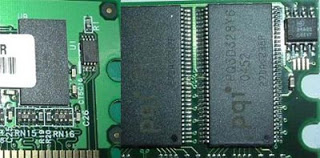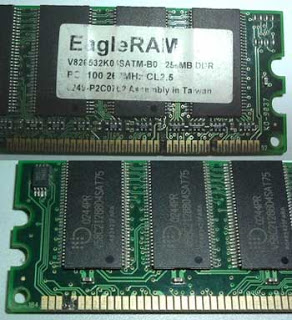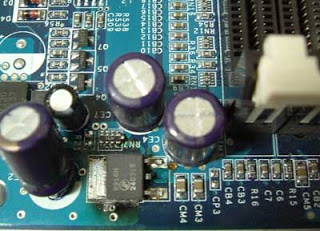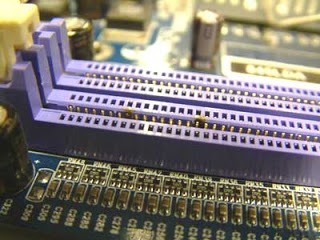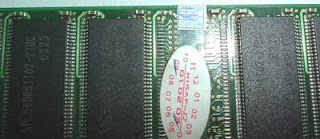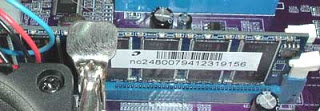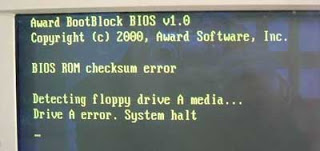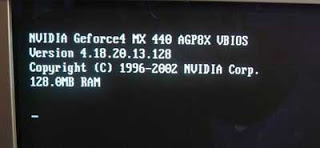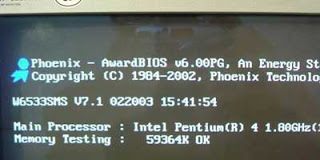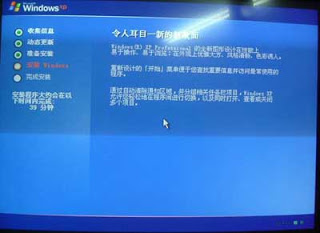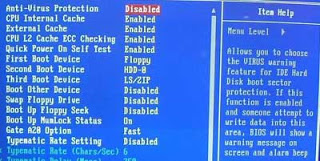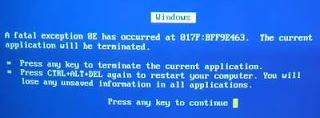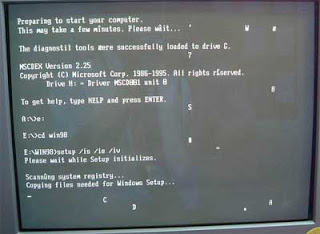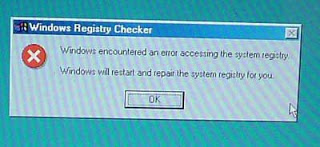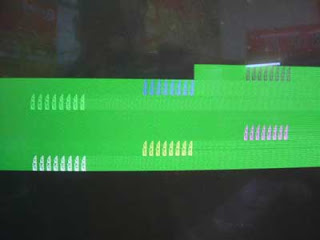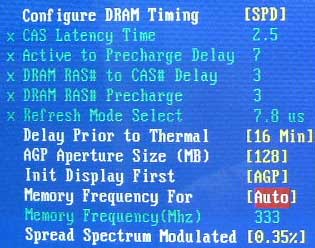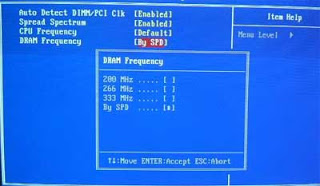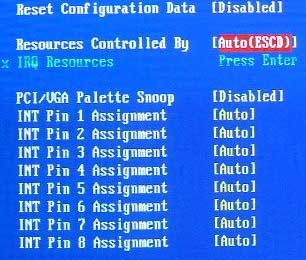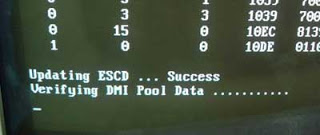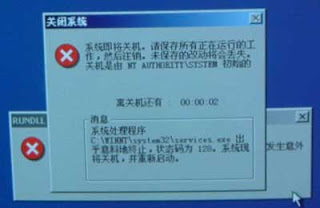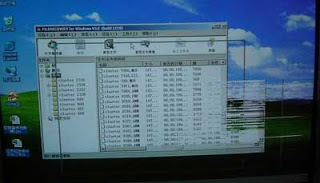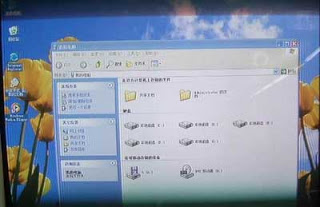DDR2 function introduction
1. The best auxiliary helper for testing, the most convenient and practical maintenance tool.
2. Twelve years of experience in programming in the DRAM memory industry.
3.Can test DDR2 16M * 16, DDR2 32M * 8, DDR2 32M * 16, DDR2 64M * 8, DDR2 64M * 16, DDR2 128 * 8 IC particles; can measure the specific single degraded bit number, can be measured Specifically cut the Address block.
4. Can test the finished product of computer memory stick made by IC with DDR2 or above, with burn in copy machine program, RST copy machine program, and MEMTEST copy machine program.
5. It can repair the defective products of computer memory sticks made by ICs with DDR2 or above (including non-power-on, non-lighting defective goods). For the non-bootable memory sticks, you can quickly find out the bad bits and it is easy to repair.
6. It can repair the non-powered memory stick made of double-sided 16-grain IC, which can accurately grasp the bad bits; it is suitable for 1BANK double-sided repair, 2BANK double-sided repair depth.
7. A wide range of application products, you can freely set Sorting selection order according to your needs.
8. Freely set the detection rigor and environmental parameters. The length of the test time can be set freely, which can increase productivity.
9. Compared with instruments with similar functions, the price, cost, maintenance, operation and use have many advantages, and are well received by new and old customers.
10. The price is moderate, the operation is simple, and it is not easy to damage; the technical support is good, and the upgrade is convenient.
11. Professional grade is used for memory chip length, width detection, depth capacity partition, memory module production, detection and maintenance.
12. Easy to use, accurate, fast and advanced.
13. Detect 64-bit data line fault display, DQ0-DQ63 data bit bad area detection display, A0-A13 address fault display.
14. DDR and SD memory chips and memory stick core detection programs are all in the same host server.
15. The screen automatically displays the SPD data content. Contains a special SPD editing and burning program, the operation is simple and convenient.
16. Fully automatic application of DDR2, DDR and SD memory chips and memory modules of various frequencies.
17. Unique memory partition technology to make waste products offline;
18. After the memory chip is partitioned, it becomes a degraded down grade memory chip, increasing its use value
Detailed description of memory repair
First, boot no display
due to the memory of such failures are generally due to memory and the motherboard memory slot is bad cause, as long as the eraser wipe their cheat site back and forth to solve the problem (do not clean with alcohol, etc.), There is also a memory corruption or a problem with the motherboard’s memory slot that can cause such failures.
Article reasons due to memory failure causes boot no display, host speakers typically long beep (for Award Bios terms)
two, windows system is running instability, often produce illegal error
occurs such failures are generally due to poor quality memory chips or software Caused by, if it is determined that it is the cause of the memory module, it can only be replaced. 3. The Windows registry is often damaged for no reason, prompting the user to recover from such failures is generally caused by the poor quality of the memory module, and it is difficult to repair it. Only replacement is possible.
Four, windows are often automatically enter safe mode
Such failures are generally due to the motherboard and memory is not compatible or memory caused by poor quality, common in some PC133 memory for PC133 memory is not supported by the motherboard, you can try in the CMOS settings Reduce the internal memory read speed to see if it can solve the problem. If it doesn’t work, then only replace the memory stick.
Fifth, random crashes
such failures are generally due to the use of several different chips of memory, because various memory speeds to produce a time lag resulting in the crash, which may reduce the memory speed to be resolved within the CMOS setup, otherwise, only The same type of memory is used. Another possibility is that the memory module is not compatible with the motherboard. This kind of phenomenon is generally rare. In addition, it is also possible that the poor contact between the memory module and the motherboard causes the computer to randomly crash. This kind of phenomenon is quite common.
Sixth, the system memory to increase resources but reduce
such phenomenon is generally due to the motherboard and memory caused by incompatible, common in some PC133 memory for PC133 memory is not supported by the motherboard, even reinstall the system can not solve the problem.
Seven, when windows starts, when loaded in high memory file himem.sys prompted to address some problem with
this issue is usually due to some memory chip damage caused, the solution can be found below a memory repair method.
Eight, often when running certain software out of memory tips
This phenomenon is generally due to a lack of system disk free space cause, you can delete some useless files, leaving some space to the general maintained a
t about 300M appropriate.
Nine, when installing Windows from the hard drive to detect disk space, the system prompts that there is insufficient memory. This type of failure is generally due to the user adding the emm386.exe file to the config.sys file, as long as it is shielded to solve the problem.
In fact, the method of booting and installing windows from the hard disk in DOS mode is relatively complicated and slow. First, the DOS file must be installed on the hard disk, and the config.sys and autoexec.bat files must also be configured. If the file is not properly configured, it will also It causes a series of unforeseen failures, which is not practical for beginners. Second, after the windows is successfully loaded, the config.sys and autoexec.bat files will be called to drive the CD-ROM drive every time the system is started, so that the system startup time is prolonged. If config.sys and autoexec.bat are blocked, under windows Sometimes the optical drive does not work properly.
10. An illegal error occurred when installing windows to the system configuration
This type of failure is generally caused by damage to the memory module, which can be solved according to the method of memory maintenance. If it does not work, then only the memory module needs to be replaced.
XI, start windows when the system restarts automatically several times
such failures are generally due to memory or power quality problems caused, of course, the system restarts there may be bad CPU cooling or other human error caused this, only with The elimination method excludes step by step.
Twelve, a memory repair process
after a fault occurs several above, if the memory chips or the quality is not damaged, as with a soldering iron may be conditions do not allow the memory chips of each side of the removal, see can solve the problem, we should not discharge the other and back One side of the chip until it succeeds (so the welder is only afraid of the person who needs to repair the mobile phone). Of course, if it is possible to use an oscilloscope to detect it, it will get twice the result with half the effort.) After using this method, because one side of the memory has been removed, only half of the memory is available. For example, 64M and 32M are available. For this reason, for small-capacity memory There is no need for maintenance.
due to the memory of such failures are generally due to memory and the motherboard memory slot is bad cause, as long as the eraser wipe their cheat site back and forth to solve the problem (do not clean with alcohol, etc.), There is also a memory corruption or a problem with the motherboard’s memory slot that can cause such failures.
Article reasons due to memory failure causes boot no display, host speakers typically long beep (for Award Bios terms)
two, windows system is running instability, often produce illegal error
occurs such failures are generally due to poor quality memory chips or software Caused by, if it is determined that it is the cause of the memory module, it can only be replaced. 3. The Windows registry is often damaged for no reason, prompting the user to recover from such failures is generally caused by the poor quality of the memory module, and it is difficult to repair it. Only replacement is possible.
Four, windows are often automatically enter safe mode
Such failures are generally due to the motherboard and memory is not compatible or memory caused by poor quality, common in some PC133 memory for PC133 memory is not supported by the motherboard, you can try in the CMOS settings Reduce the internal memory read speed to see if it can solve the problem. If it doesn’t work, then only replace the memory stick.
Fifth, random crashes
such failures are generally due to the use of several different chips of memory, because various memory speeds to produce a time lag resulting in the crash, which may reduce the memory speed to be resolved within the CMOS setup, otherwise, only The same type of memory is used. Another possibility is that the memory module is not compatible with the motherboard. This kind of phenomenon is generally rare. In addition, it is also possible that the poor contact between the memory module and the motherboard causes the computer to randomly crash. This kind of phenomenon is quite common.
Sixth, the system memory to increase resources but reduce
such phenomenon is generally due to the motherboard and memory caused by incompatible, common in some PC133 memory for PC133 memory is not supported by the motherboard, even reinstall the system can not solve the problem.
Seven, when windows starts, when loaded in high memory file himem.sys prompted to address some problem with
this issue is usually due to some memory chip damage caused, the solution can be found below a memory repair method.
Eight, often when running certain software out of memory tips
This phenomenon is generally due to a lack of system disk free space cause, you can delete some useless files, leaving some space to the general maintained a
t about 300M appropriate.
Nine, when installing Windows from the hard drive to detect disk space, the system prompts that there is insufficient memory. This type of failure is generally due to the user adding the emm386.exe file to the config.sys file, as long as it is shielded to solve the problem.
In fact, the method of booting and installing windows from the hard disk in DOS mode is relatively complicated and slow. First, the DOS file must be installed on the hard disk, and the config.sys and autoexec.bat files must also be configured. If the file is not properly configured, it will also It causes a series of unforeseen failures, which is not practical for beginners. Second, after the windows is successfully loaded, the config.sys and autoexec.bat files will be called to drive the CD-ROM drive every time the system is started, so that the system startup time is prolonged. If config.sys and autoexec.bat are blocked, under windows Sometimes the optical drive does not work properly.
10. An illegal error occurred when installing windows to the system configuration
This type of failure is generally caused by damage to the memory module, which can be solved according to the method of memory maintenance. If it does not work, then only the memory module needs to be replaced.
XI, start windows when the system restarts automatically several times
such failures are generally due to memory or power quality problems caused, of course, the system restarts there may be bad CPU cooling or other human error caused this, only with The elimination method excludes step by step.
Twelve, a memory repair process
after a fault occurs several above, if the memory chips or the quality is not damaged, as with a soldering iron may be conditions do not allow the memory chips of each side of the removal, see can solve the problem, we should not discharge the other and back One side of the chip until it succeeds (so the welder is only afraid of the person who needs to repair the mobile phone). Of course, if it is possible to use an oscilloscope to detect it, it will get twice the result with half the effort.) After using this method, because one side of the memory has been removed, only half of the memory is available. For example, 64M and 32M are available. For this reason, for small-capacity memory There is no need for maintenance.
New chapter of memory repair
Memory is one of the big parts of the computer, and its performance is directly related to whether the computer can work normally and steadily, so we must buy a memory stick with good quality and performance when buying a computer to reduce the future In the process of using, because of the frequent failure of the memory module, our work is affected.
Because the memory module directly exchanges data with the CPU and external memory, its frequency of use is quite high. In addition, the memory module is a very large-scale integrated circuit. If one or a few of its internal transistors are damaged, it may affect the stable operation of the computer. At the same time, the faults exhibited are not the same, so it brings certain difficulties to our maintenance work. Now, I will summarize the failures of the memory module encountered in actual work, I hope to help you in your work.
1. Classification according to the cause of the failure. What
we usually call the memory stick is enclosed by 4, 8, 16 1 * 16M or 2 * 32M or larger memory chips on the PCB board, and then supplemented by resistors and capacitors. At present, with the introduction of DDR266, DDR333, DDR400, and DDR533 memory, there are many types of memory, but the memory read and write cycles and delay settings are very professional. Incorrect settings will cause the computer to not start or work unstable. There is a serial FLASH chip on the bar to store the working frequency of the memory bar, read and write cycle, refresh cycle, delay and other specific working parameters. Therefore, in the memory parameter setting of CMSO, there is a “BY SPD” is to choose to work according to the configuration parameters in the memory SPD.
Because the memory module directly exchanges data with the CPU and external memory, its frequency of use is quite high. In addition, the memory module is a very large-scale integrated circuit. If one or a few of its internal transistors are damaged, it may affect the stable operation of the computer. At the same time, the faults exhibited are not the same, so it brings certain difficulties to our maintenance work. Now, I will summarize the failures of the memory module encountered in actual work, I hope to help you in your work.
1. Classification according to the cause of the failure. What
we usually call the memory stick is enclosed by 4, 8, 16 1 * 16M or 2 * 32M or larger memory chips on the PCB board, and then supplemented by resistors and capacitors. At present, with the introduction of DDR266, DDR333, DDR400, and DDR533 memory, there are many types of memory, but the memory read and write cycles and delay settings are very professional. Incorrect settings will cause the computer to not start or work unstable. There is a serial FLASH chip on the bar to store the working frequency of the memory bar, read and write cycle, refresh cycle, delay and other specific working parameters. Therefore, in the memory parameter setting of CMSO, there is a “BY SPD” is to choose to work according to the configuration parameters in the memory SPD.
However, although some inferior memory sticks also have this chip on them, there is no information stored in them. If we still want BY SPD to configure memory parameters, there will definitely be some inexplicable problems.
1. Poor contact
Because the gold fingers of the memory stick are poorly gold-plated or the memory is often plugged and unplugged, the memory is oxidized and rusted due to contact with the air during use, and it gradually contacts the memory slot poorly, and finally generates an alarm that does not start at boot failure.
1. Poor contact
Because the gold fingers of the memory stick are poorly gold-plated or the memory is often plugged and unplugged, the memory is oxidized and rusted due to contact with the air during use, and it gradually contacts the memory slot poorly, and finally generates an alarm that does not start at boot failure.
Solution: We only need to remove the memory stick, and wipe the rust spots on the golden fingers with the rubber.
Note: When inserting a memory module, we must not directly touch the gold fingers of the memory module with our hands. This is to prevent the static electricity on the hands from damaging the memory module. The sweat on the hands is more likely to cause gold fingers Oxidation and rust.
2. This situation often occurs when the gold finger of the memory stick is burned
. As long as you have done computer maintenance , I am afraid that you have encountered something similar to the reverse burn of the memory. Under normal circumstances, most of the burning of the memory module is due to our long-term troubleshooting process. I was not focused. During repeated power-on tests, I accidentally inserted the memory module backwards or the memory module was not fully inserted into the slot. It may also be due to the fact that the memory module was plugged and unplugged.
Only a few memory is in normal use, since the power or unexpected overvoltage damage, memory and causing the main board and the like at the same time damage.
Note: When inserting a memory module, we must not directly touch the gold fingers of the memory module with our hands. This is to prevent the static electricity on the hands from damaging the memory module. The sweat on the hands is more likely to cause gold fingers Oxidation and rust.
2. This situation often occurs when the gold finger of the memory stick is burned
. As long as you have done computer maintenance , I am afraid that you have encountered something similar to the reverse burn of the memory. Under normal circumstances, most of the burning of the memory module is due to our long-term troubleshooting process. I was not focused. During repeated power-on tests, I accidentally inserted the memory module backwards or the memory module was not fully inserted into the slot. It may also be due to the fact that the memory module was plugged and unplugged.
Only a few memory is in normal use, since the power or unexpected overvoltage damage, memory and causing the main board and the like at the same time damage.
However, the memory module is not necessarily scrapped after reverse insertion and burned. Most of them can still be used normally. This is because the memory module has multiple power supplies and ground wires. When it is reverse inserted, it is often because the local ground wire connects the power supply to ground Through, so as long as power is applied, this section of the ground wire that acts as a short circuit will be burned, while the other ground wires and chips have not been damaged. The memory stick in the left picture above, although there are two gold finger pins burned off, but the memory stick can still be used normally.
3. The power supply tube of the memory slot is damaged
due to an accident or our memory is inserted backwards. The memory is not inserted in place. While the memory is burned, the power supply adjustment tube of the memory is often overheated at the same time because of a short circuit The short circuit causes the memory to be directly powered by the power supply +3.3, and the power supply voltage of the DDR memory we use is 2.5V, so there will be a black screen failure during the boot alarm.
3. The power supply tube of the memory slot is damaged
due to an accident or our memory is inserted backwards. The memory is not inserted in place. While the memory is burned, the power supply adjustment tube of the memory is often overheated at the same time because of a short circuit The short circuit causes the memory to be directly powered by the power supply +3.3, and the power supply voltage of the DDR memory we use is 2.5V, so there will be a black screen failure during the boot alarm.
Solution: The power adjustment tube like the above picture is obviously burned due to overheating, and the surrounding PCB board also has obvious burn marks. For troubleshooting, it is only necessary to remove power adjustment tubes with similar currents (such as 45N03, 50N20, 60N30, etc.) from other discarded motherboards , and replace them directly. After the power adjustment tube is burned out for some motherboards , the connected excitation tube will also be broken down, and it can be replaced together.
4 , the motherboard capacitor damage
because the motherboard memory technology used is regulated down conversion, so a large amount of current higher harmonic filter, which must be filtered using electrolytic capacitors. Because the filter capacitor in the memory power supply circuit is near the memory stick, long-term high-temperature smoking often bubbles and leaks out of volume, causing the power supply quality of the memory to decline, and a power-on alarm occurs and the host does not start.
4 , the motherboard capacitor damage
because the motherboard memory technology used is regulated down conversion, so a large amount of current higher harmonic filter, which must be filtered using electrolytic capacitors. Because the filter capacitor in the memory power supply circuit is near the memory stick, long-term high-temperature smoking often bubbles and leaks out of volume, causing the power supply quality of the memory to decline, and a power-on alarm occurs and the host does not start.
Solution: Just replace the capacitor with the same volume and capacity, and the capacity can be changed to a larger one.
5. The memory slot spring is damaged
. The spring in the memory slot is damaged due to improper installation. Shedding, deformation, burning, etc. cause poor contact of the memory module. In addition, when the memory module is burned in reverse, the metal reeds of the corresponding parts of the memory slot will also be melted or deformed, which may cause the entire memory slot to be scrapped.
5. The memory slot spring is damaged
. The spring in the memory slot is damaged due to improper installation. Shedding, deformation, burning, etc. cause poor contact of the memory module. In addition, when the memory module is burned in reverse, the metal reeds of the corresponding parts of the memory slot will also be melted or deformed, which may cause the entire memory slot to be scrapped.
Solution: We can use a small camera and a flat-blade screwdriver to remove the molten material, and then carefully pull up the reed.
6. Capacitance resistance particles fall off
At present, SDRAM and DDR memory on the market are bare packages. Therefore, during the storage, handling, installation, removal, and maintenance of the memory, the small capacitive resistance particles above will fall off due to human factors, resulting in memory alarm after booting. Unable to start the computer normally.
6. Capacitance resistance particles fall off
At present, SDRAM and DDR memory on the market are bare packages. Therefore, during the storage, handling, installation, removal, and maintenance of the memory, the small capacitive resistance particles above will fall off due to human factors, resulting in memory alarm after booting. Unable to start the computer normally.
Solution: Under normal circumstances, the resistance used on the memory stick is 10-100 ohm chip capacitors, and the capacitance is only tens of PF, so we only need to remove it from the motherboard or the bad memory stick and solder it on. However, it depends on your welding skills, but it takes real effort.
2. Classification according to the fault phenomenon
1. Power-on alarm, the host cannot start the
memory module properly or the memory is not inserted properly during insertion, resulting in poor contact between the gold finger of the memory module and the memory slot. alarm
most of the time we encounter are such failure, just need to take down the memory and then re-inserted about it. However, we need to note that the gold plating process of the gold fingers of the memory stick is different, the thickness of the gold plating layer of the gold fingers of the memory stick is also different, and the life of the pluggable memory is also different, generally about 200 times, so in general Do not plug or unplug memory frequently.
2. Classification according to the fault phenomenon
1. Power-on alarm, the host cannot start the
memory module properly or the memory is not inserted properly during insertion, resulting in poor contact between the gold finger of the memory module and the memory slot. alarm
most of the time we encounter are such failure, just need to take down the memory and then re-inserted about it. However, we need to note that the gold plating process of the gold fingers of the memory stick is different, the thickness of the gold plating layer of the gold fingers of the memory stick is also different, and the life of the pluggable memory is also different, generally about 200 times, so in general Do not plug or unplug memory frequently.
Power-on alarm, indicating that the BIOS on the motherboard is damaged, you need to insert a floppy disk to repair the BIOS.
During the power-on reset self-test of the computer, the CPU needs to read the BIOS program and the program code controls the operation of the computer. Of course, these program codes need to be read in first. It can only be executed in the computer’s memory RAM, so
if the system prompts “BIOS is damaged, please insert the A disk” and the like, it is not necessarily that the content of the BIOS chip is damaged by a virus or the BIOS chip is damaged, but there may be The CPU, memory, or CACHE of the CPU memory or the CACHE on the motherboard is damaged.
During the power-on reset self-test of the computer, the CPU needs to read the BIOS program and the program code controls the operation of the computer. Of course, these program codes need to be read in first. It can only be executed in the computer’s memory RAM, so
if the system prompts “BIOS is damaged, please insert the A disk” and the like, it is not necessarily that the content of the BIOS chip is damaged by a virus or the BIOS chip is damaged, but there may be The CPU, memory, or CACHE of the CPU memory or the CACHE on the motherboard is damaged.
Unstable memory power supply. For some motherboards that have been used for more than two or three years , because the capacitors on the motherboard have been exposed to high temperature for a long time, the capacitance of the CPU and the memory bar will slowly decrease. Except for some of the motherboard ‘s capacitors, these changes will cause blistering and liquid leakage. Most of the time, these surfaces are not special, but because of the reduced capacitance, the high-frequency AC component in the memory or CPU power supply current increases, which will occur at this time. The host is not easy to start and cannot be powered on. It can only be started after many times of booting. However, if this kind of problem occurs in the capacitor around the memory, some unstable failures will occur. Sometimes it will stagnate during the self-test of the graphics card , or it may stagnate during the self-test of the memory, or it will not move when the IDE is detected, etc. , And occasionally can normally enter the desktop to operate the computer. This type of fault is different because of its special performance, so it is best to use the elimination method when repairing, and replace and check it in the order of memory, CPU, and motherboard . Memory is not completed POST stalled mains damage, + 3.3V unstable power supply apparatus using two or more memory modules, memory is not the same brand of the same model, because of the different operating frequencies of the memory access speed and result Power-on alarm. 2. Power-on alarm, but the host can start normally, there is an ambulance alarm sound, but the display has an image display, the host starts, and can enter the system . CPU temperature detection is abnormal but does not reach the immediate shutdown level . Host switch power supply output voltage Abnormal, high or low · Main board
Defective, boot sometimes occasional alarm ambulance, but sometimes it can start normal
boot sheared “Didi” alarm sound, the host can start, monitor image display, the system can enter
3 , the boot does not alarm , The host can start normally, but can not enter the desktop normal operation
(1), the same machine installed WIN98 system is normal, the operation is also no problem, but it can not be correctly installed WINXP system, suddenly crashed during the installation process, usually in hardware detection Stagnated for a long time.
boot sheared “Didi” alarm sound, the host can start, monitor image display, the system can enter
3 , the boot does not alarm , The host can start normally, but can not enter the desktop normal operation
(1), the same machine installed WIN98 system is normal, the operation is also no problem, but it can not be correctly installed WINXP system, suddenly crashed during the installation process, usually in hardware detection Stagnated for a long time.
Note: If the anti-virus switch that comes with the motherboard is turned on, it will suddenly stop during the installation process when installing the WINDOWS operating system. The system cannot be installed normally due to this CMOS setting and the system cannot be installed due to memory problems. This requires us to pay attention to in actual work.
(2) During the installation process, it prompts that a DLL file or other files cannot be found on the CD-ROM, causing the installation to be interrupted. This situation often occurs. After excluding the reason that we are not using the CD-ROM and the performance of the CD-ROM drive reading, it can be determined that the memory is unstable, or the memory may be overclocked.
(3) Although it can enter the desktop, it often prompts “illegal operation” during the operation process, and a blue screen of death occurs.
(4) Unable to install WIN98. During installation, it prompts that the “CAB” compressed file cannot be decompressed. This kind of trouble is often encountered in the era of WIN98. After we enter SETUP, the system prompts a prompt message and cannot open the “CAB” compressed file. When encountering this kind of failure, we must first check whether the parameter settings of the memory are normal, and then check whether the installation of the memory module is correct and reliable, and whether the gold fingers of the memory module are oxidized. If the above faults are eliminated, it is because of a problem with the memory module, which is generally caused by the aging of the memory chip. (5) The system can be powered on and bootstrapped, but the screen is full of abnormal messy characters or irregular character images.
(6) It can start normally, but it prompts the registry error as soon as it enters the WIN98 desktop, and the registry needs to be repaired. However, after you use the “SCANREG / RESTORE” command to repair the registry, the failure remains.
(7). Start normally, but the screen will appear after entering the desktop, but it is normal when entering the safe mode. This kind of failure is more common in the machine with integrated graphics . The graphics card shares the host memory, so when there is a problem with the memory, it will be first displayed in the display.
(8), WIN98 has a protective error during startup, and then the system hangs.
4 , the boot does not alarm, the panel will not start
memory chips aging failure
cause the machine to be able to power up but can not complete the bootstrapping process, so the system can not start the self-test. The specific performance is that after pressing the power switch of the host, the power fan of the host starts to work, the CPU fan also works, the host has no alarm sound, and no image appears on the display for a long time.
For such failures, you can use the elimination method. If there is only one memory, you can unplug the memory and power on the test machine to observe whether the machine has a memory alarm; if there are two memories to replace the test one by one.
The parameter setting of the memory in CMOS is wrong
memory chips aging failure
cause the machine to be able to power up but can not complete the bootstrapping process, so the system can not start the self-test. The specific performance is that after pressing the power switch of the host, the power fan of the host starts to work, the CPU fan also works, the host has no alarm sound, and no image appears on the display for a long time.
For such failures, you can use the elimination method. If there is only one memory, you can unplug the memory and power on the test machine to observe whether the machine has a memory alarm; if there are two memories to replace the test one by one.
The parameter setting of the memory in CMOS is wrong
If we change the read and write parameters of the memory in the CMOS settings, there may be no screen display for a long time after the machine restarts, nor the sound of the machine alarm, only the sound of the fan rotating. For the resolution of such faults, we need to open the case to discharge CMOS, and change the default setting of CMOS to start normally.
After replacing a memory module, ESCD data is out of date
set in the first term PNP / PCI Congfigurations selected in the CMOS is “RESET Congiguration Data”, which can only option “Disable” and “Enable” two, normally open for ” Disable “option. We usually do not pay attention to this function during installation and maintenance. For some machines, if we do not operate this item, when we change the hardware configuration of the machine, the system cannot recognize the new hardware, and there will be no Failure to start normally.
Therefore, when we add a hard disk, optical drive, memory or replace the above hardware, we need to enter the CMOS settings and set this item to “Enable”, restart the computer, and then complete the “shown on the right” after the computer starts. Updating ESCD … Success “update process. At the same time, the setting of this item to “Enable” is only valid for a single time, and it will automatically change to “Disable” after startup.
Of course, we can also not let ESCD manage the hardware resources of the system, or we can clear the CMOS information to clear the configuration information of ESCD data.
5. The system can be installed and operated normally, but there are irregular irregularities
(1), and a certain system file is lost irregularly, which causes the system to not start normally after a period of use and can only reinstall the operating system.
Therefore, when we add a hard disk, optical drive, memory or replace the above hardware, we need to enter the CMOS settings and set this item to “Enable”, restart the computer, and then complete the “shown on the right” after the computer starts. Updating ESCD … Success “update process. At the same time, the setting of this item to “Enable” is only valid for a single time, and it will automatically change to “Disable” after startup.
Of course, we can also not let ESCD manage the hardware resources of the system, or we can clear the CMOS information to clear the configuration information of ESCD data.
5. The system can be installed and operated normally, but there are irregular irregularities
(1), and a certain system file is lost irregularly, which causes the system to not start normally after a period of use and can only reinstall the operating system.
(2) The desktop operation is normal, but the printer cannot print normally. Whether the printer is replaced or the data cable is replaced, the printer driver cannot solve the problem. The problem is solved after the memory module is finally replaced.
(3) The system installation and operation are normal, but occasionally the system will automatically restart irregularly. Touching the surface of the memory module with your hands for a few hours after powering on, you will obviously feel the heat of the memory module is large and the surface is hot.
(4), after using for a period of time, the memory alarm black screen is turned on, and only need to re-plug the memory failure to eliminate. But after using it for a while, the same fault will appear again. At first, this kind of failure seems to be a small problem, which can be solved by just plugging and unplugging the memory, but if such a failure occurs once a month, can you still think it is a small problem? The root cause of this problem is poor memory and motherboard compatibility. Similar ones include Jetway P4XFA motherboard and MoSi PC266 CL2.5 128MDDR memory; Jetway 694AST2 motherboard and MoSi 128M SDRAM memory; Jetway P4MFM motherboard , MoSi SDRAM 256M The memory has experienced similar failures with frequent power-on alarms, but everything works fine after the memory is plugged and unplugged. The solution is to replace the memory or motherboard .
(5) The installation and operation of the system are normal, but after a few hours of continuous booting, it will obviously feel that the running speed of the system is getting slower and slower, and finally the system resources are exhausted and crash.
(3) The system installation and operation are normal, but occasionally the system will automatically restart irregularly. Touching the surface of the memory module with your hands for a few hours after powering on, you will obviously feel the heat of the memory module is large and the surface is hot.
(4), after using for a period of time, the memory alarm black screen is turned on, and only need to re-plug the memory failure to eliminate. But after using it for a while, the same fault will appear again. At first, this kind of failure seems to be a small problem, which can be solved by just plugging and unplugging the memory, but if such a failure occurs once a month, can you still think it is a small problem? The root cause of this problem is poor memory and motherboard compatibility. Similar ones include Jetway P4XFA motherboard and MoSi PC266 CL2.5 128MDDR memory; Jetway 694AST2 motherboard and MoSi 128M SDRAM memory; Jetway P4MFM motherboard , MoSi SDRAM 256M The memory has experienced similar failures with frequent power-on alarms, but everything works fine after the memory is plugged and unplugged. The solution is to replace the memory or motherboard .
(5) The installation and operation of the system are normal, but after a few hours of continuous booting, it will obviously feel that the running speed of the system is getting slower and slower, and finally the system resources are exhausted and crash.
(6) Excessive dust in the host causes poor heat dissipation of the memory stick. After the machine is used for a certain period of time, the system jumps due to the heat generated by the memory.
(7) Part of the memory chip is damaged, resulting in bad blocks in the hard disk or inability to format.
(8) The system randomly crashes during operation. This type of failure is generally caused by using two or more memory modules of different brands and different models and different speeds; it may also be caused by poor memory quality and excessive memory speed.
(9) In the process of using the system, it will often report a registry error, prompting the user to restore the registry. But after restoring the registry or reinstalling the system, the same prompt still appears. This kind of failure is generally caused by poor memory quality or memory overclocking.
(10) The system is normally powered on and self-test, but after entering the desktop, it will automatically shut down after 60 seconds. For the 60S automatic shutdown, everyone only knows after the shock wave virus. In fact, this is a system prompt to automatically shut down the current operation in order to safely exit when a serious error occurs in the system resources. When the system memory performance is unstable, due to data errors during operation, the system cannot be calculated and operated normally, so it automatically shuts down and exits.
(7) Part of the memory chip is damaged, resulting in bad blocks in the hard disk or inability to format.
(8) The system randomly crashes during operation. This type of failure is generally caused by using two or more memory modules of different brands and different models and different speeds; it may also be caused by poor memory quality and excessive memory speed.
(9) In the process of using the system, it will often report a registry error, prompting the user to restore the registry. But after restoring the registry or reinstalling the system, the same prompt still appears. This kind of failure is generally caused by poor memory quality or memory overclocking.
(10) The system is normally powered on and self-test, but after entering the desktop, it will automatically shut down after 60 seconds. For the 60S automatic shutdown, everyone only knows after the shock wave virus. In fact, this is a system prompt to automatically shut down the current operation in order to safely exit when a serious error occurs in the system resources. When the system memory performance is unstable, due to data errors during operation, the system cannot be calculated and operated normally, so it automatically shuts down and exits.
The following faults are caused by the integrated graphics card shared host memory:
(11), the system can be installed normally and
can be used normally, but it often enters safe mode automatically after booting, that is, the “screen icon has become larger” , The color is not normal “, you can enter the” Normal “operation normally after exiting.
(12) The self-tests are normal after booting, but after entering the desktop, the screen will display and the safe mode will also display the screen.
(11), the system can be installed normally and
can be used normally, but it often enters safe mode automatically after booting, that is, the “screen icon has become larger” , The color is not normal “, you can enter the” Normal “operation normally after exiting.
(12) The self-tests are normal after booting, but after entering the desktop, the screen will display and the safe mode will also display the screen.
(13) Start normally, but the image on the screen of the mouse will shake violently as long as you move it. Careful observation shows that as soon as an application is running in the memory, the window will shake violently. The cause of this failure is poor memory performance, and the machine also uses integrated graphicsWhen there are a lot of data operations in the machine’s memory, the internal interference of the memory itself causes data errors, and then the failure of the window’s local jitter occurs.
The only solution is to use the frequency down or replace the memory.
(14) This kind of failure is also caused by the integrated graphics of the shared memory , and the shielding image is normal, but each character and the edge of the image have a fuzzy shadow. Both the CRT display and the LCD display have this failure.
(14) This kind of failure is also caused by the integrated graphics of the shared memory , and the shielding image is normal, but each character and the edge of the image have a fuzzy shadow. Both the CRT display and the LCD display have this failure.
Some performances are that the screen image of the CRT monitor is normal, but when using the LCD monitor, the entire screen image will appear to flicker like magnetic field interference. This is not magnetization. This type of failure is also due to the use of integrated graphics to share the host memory (such as ASRock M266A motherboard ), and the failure disappeared after replacing the independent graphics card .
3. Software faults
Most of these faults are human judgment errors, improper human operations, inexperience of users, and faults caused by configuration file errors. The faults can be solved by reasonable settings without replacing the memory module.
1 , the memory section to reduce the
boot, in the WINDOWS found that less memory is mainly onboard integrated graphics the shared memory, resulting in the WINDOWS detect memory loss is not equal to the actual physical memory.
2. After the system runs or loads large software, the system prompts that the memory is insufficient
This kind of failure is generally caused by the lack of available space on the C drive during long-term use. The main reason is that the user did not clean up the temporary files in the C: windows temp directory in time, resulting in too little free space on the C drive.
3. The system prompts “System resources are exhausted, no system resources can be allocated.” The
system runs very slowly. It takes tens of seconds or a few minutes after the mouse is clicked to move the machine.
4. The system cannot be recognized after adding memory, or the system cannot work normally after adding memory, often crashes, restarts, and blue screens .
3. Software faults
Most of these faults are human judgment errors, improper human operations, inexperience of users, and faults caused by configuration file errors. The faults can be solved by reasonable settings without replacing the memory module.
1 , the memory section to reduce the
boot, in the WINDOWS found that less memory is mainly onboard integrated graphics the shared memory, resulting in the WINDOWS detect memory loss is not equal to the actual physical memory.
2. After the system runs or loads large software, the system prompts that the memory is insufficient
This kind of failure is generally caused by the lack of available space on the C drive during long-term use. The main reason is that the user did not clean up the temporary files in the C: windows temp directory in time, resulting in too little free space on the C drive.
3. The system prompts “System resources are exhausted, no system resources can be allocated.” The
system runs very slowly. It takes tens of seconds or a few minutes after the mouse is clicked to move the machine.
4. The system cannot be recognized after adding memory, or the system cannot work normally after adding memory, often crashes, restarts, and blue screens .

